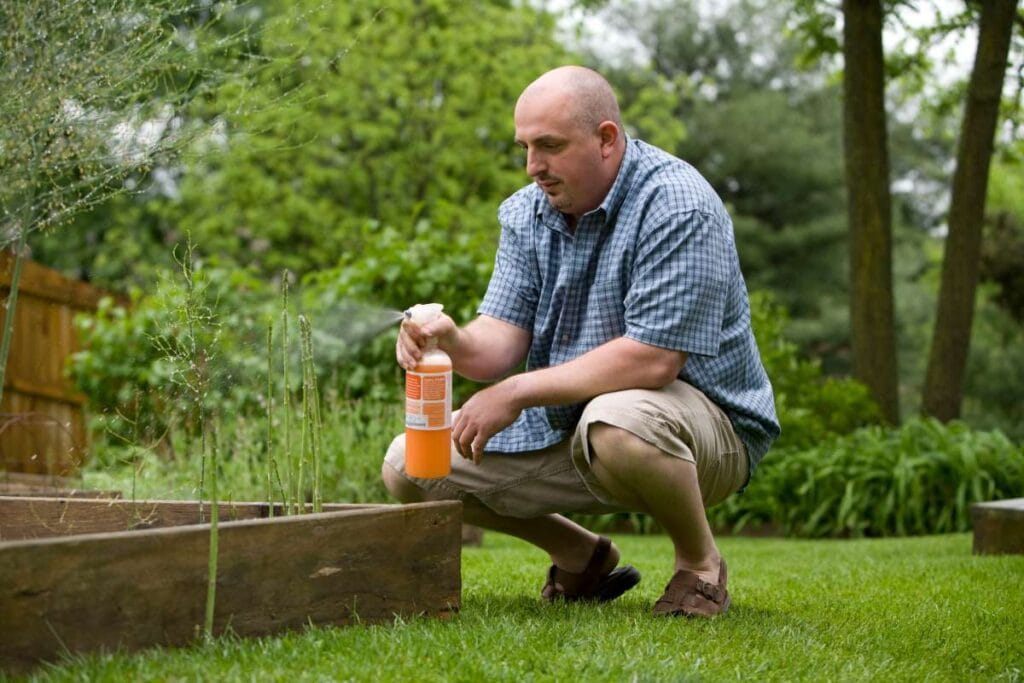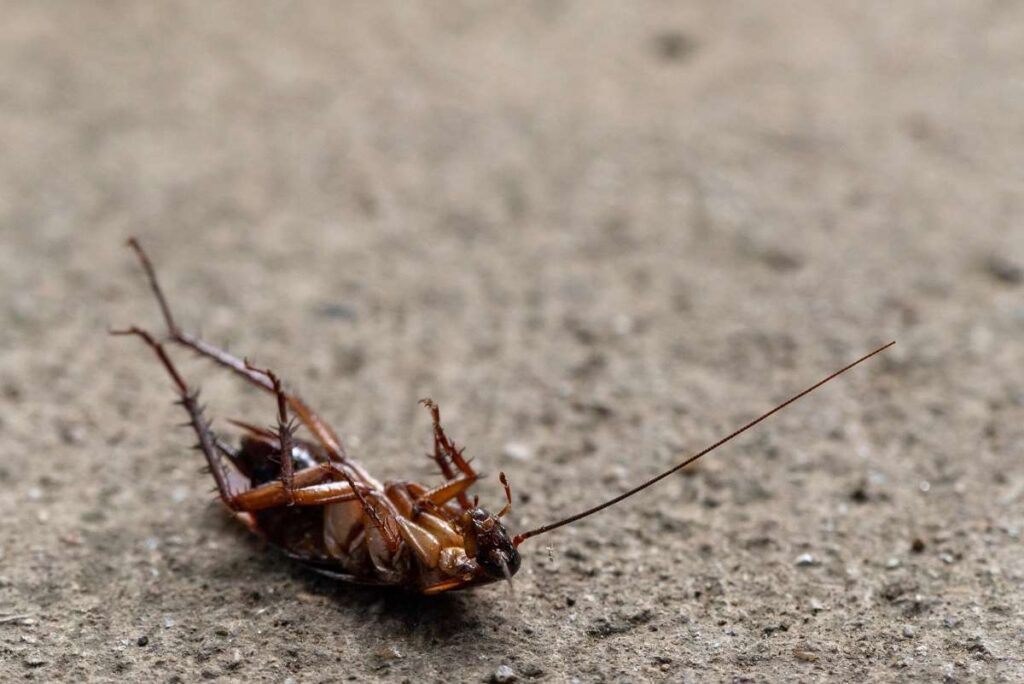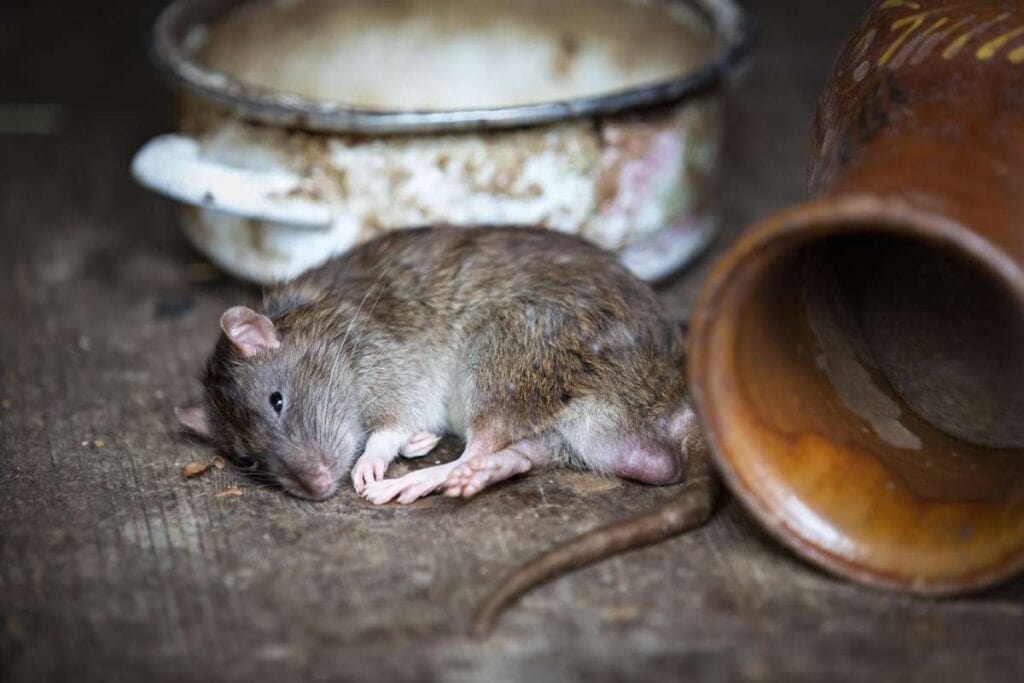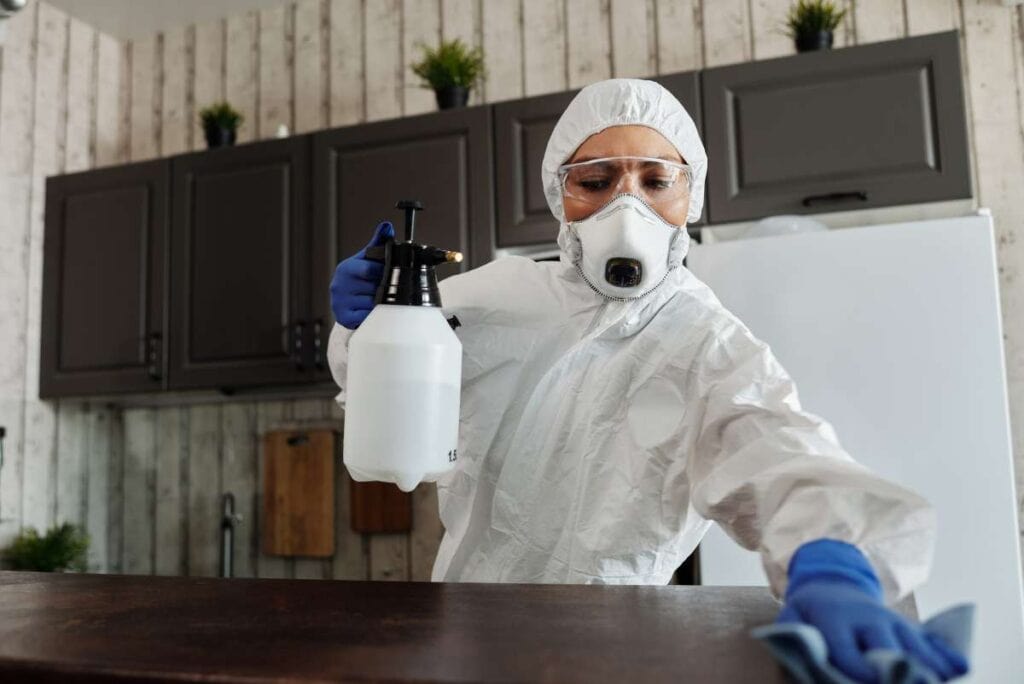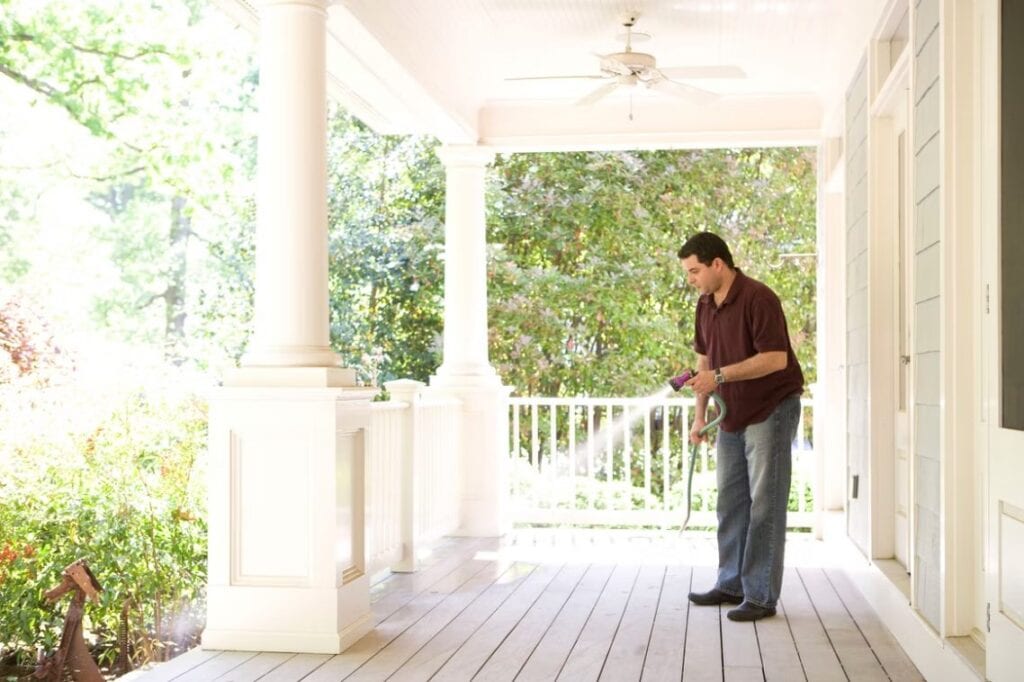It's important to know what the pest control service advises to be prepared and ensure your new home is free of unwanted critters!
Buying a new home is exciting. Buyers may imagine growing old in the house or making renovations. Few people consider having an undetected pest problem.
The roof and foundation are two main focus points of a typical home inspection. A more thorough pest inspection can uncover breeding grounds for pests and protect buyers from discovering hidden damage.
FAQS About Pest Control
Our pest-control and pest-management programme should be implemented whenever a new building grows, not just if a home is being built. It is because it is not uncommon for mice and rats to be found dead or trapped in a newly built structure.
Construction workers and other tradespeople who frequent the site will increase the area's attractiveness to rodents by bringing food and leaving behind litter. There is a general awareness that rodent infestations pose risks to site workers' health, including the transmission of diseases like Weil's.
We recommend quarterly or even bi-monthly pest control treatments to prevent common pests or rid your new home or apartment of any existing problems. When dealing with a severe infestation, it's best to spread your monthly treatments over 3 to 6 months.
It's a common belief that pests will hibernate until spring when winter comes. Crawling insects and other problems that don't hibernate during the winter can make their way indoors, luring mice and other rodents in search of warmth.
It's preferable to reduce the frequency of mopping after treatment. The protective effects of the perimeter spray are expected to last anywhere from 30 to 90 days.
When Touring A New Home, Keep An Eye Out For The Following Signs:

Mud tubes, hollow-sounding wood, damaged decks or wooden fences, and stacks of discarded wings are all telltale signs of a termite infestation.
Like termites, carpenter ants eat weakened wood after it is exposed to moisture. Keep an eye out for mould and sawdust-looking piles that may indicate water damage.
Mice and rats invade homes for safety, nourishment, and hydration. Droppings, scratching sounds, chewed wires and gathered loose papers are all indicators of a rodent infestation.
Bed Bugs: \ While bed bugs are not as common in a home as in an apartment, it's not impossible. Be especially careful when items like sofas and beds are left behind. If purchasing a new townhome or condo, be highly alert for bed bug infestations. It's a good idea to ask the property manager about previous bed bug problems.
Know before you buy. It's essential to have a licenced pest control professional check out your prospective home before committing to one of your life's largest and most important purchases.
If you're having trouble dealing with pests, now is the time to get in touch with the pest control experts in your area.
All Pests is the most reliable pest control company in Melbourne. We are highly skilled in the extermination of any and all sorts of vermin, from termites to birds. In order to complete the task in a timely and effective manner, our team of experienced specialists makes use of the most recent methods and tools available.
We are aware of the aggravating and inconvenient effects that bugs can have. We provide services that can be tailored to your needs and financial constraints. We will aid you in eliminating unwanted pests in an effective manner.
Check out our website right now and get in touch with us!
Does A New Or Old Home Need Pest Control?
Homebuyers should always exercise caution, whether looking at brand-new or previously owned properties. It is crucial to remember in the case of possible pest infestations.
Potential homebuyers interested in new construction may think they don't need professional pest-control or pest-management services. Still, they'd be just as wrong as those interested in an older home.
Before making the life-altering decision to purchase a home, learning about the unique issues that can arise in both newer and older properties is essential.
Preventing Pest Damage To Older Homes
Long-term problems with marauding pests are common in older homes, especially those built before 1950, for various reasons ranging from the damaging effects of weather to the general breakdown of construction materials.
Before 1978, lead was widely used in exterior and interior paints; unfortunately, it is poisonous to young children. It is also common in plumbing systems that date back to World War II and in some water pipes installed before the mid-1980s.
Until YOU discovered in the mid-1970s that asbestos caused a type of lung cancer and other respiratory problems, it was widely used as an insulation and fireproofing material.
Dead animals in your yard or home? All Pests Melbourne is here to help you with the removal of dead animals, as quickly and affordably as possible. We know the importance of keeping your home clean and free of pests, so we'll work hard to make sure the job is done right - and fast.
New Home Construction Bugs And Pest Issues
Any house built after the year 1990 falls into this category. Cracks or gaps in the foundation of a newly constructed home can provide access to unwanted pests. The fact that modern buildings are not always built in a germ-free factory setting is something that many homebuyers fail to take into consideration. Given their outdoor location, they are often invaded by pests like insects and rodents. Materials are often improperly stored in wet conditions before construction, increasing the likelihood that they will harbour insects.
Mice infestations are common in recently built homes. It is because many of them are constructed in formerly forested areas, and the clearing of these areas for construction destroys the plants, soil, grass, brush, and trees that provide shelter for a wide variety of animals.
Another persistent problem is that shortcuts are often taken during construction, leaving homes with gaping openings that criminals can easily exploit. Weep holes in the brick outside the foundation and a gap where the sheetrock wall meets the foundation are standard features of attached garages. These are potential access points for pests like insects and rodents.
Pre-construction, during, and immediately after construction are the most common times for these pests to move in (less than two years old).
Before any new home construction starts, you should implement our pest-control and pest-management plan. It is because rodents such as mice and rats are often found trapped inside a building shortly after it has been completed.
There have been cases of these rodents establishing a permanent colony right on the construction site, especially when the project has taken longer than expected. They create nests in crevices and use insulation, wire scraps, and plastic foam containers as bedding.
Once a house is finished being built, rats and mice may find their way inside by chewing through the plastic water pipes. Soffits, copulas, and spaces between roof tiles are common nesting spots for birds and bats.
The improper disposal of food containers by construction crews is another contributing factor, as it can easily lead to new infestations of flies, mosquitoes, and other insects. These intruders can find the warmth and shelter they need in abandoned machinery and construction containers, allowing them to multiply and set up permanent residences.
Since ant mounds may have been established on the property and then disturbed before and during construction, it is not uncommon for new homes to become infested with ants. Spiders, like ants and roaches, are common in new dwellings; however, unlike these former pests, spiders can be considered beneficial in the long run.
Vital Signs That A Home Has Pest Issues
Whether looking for a new or an older property, every home buyer should know the warning signs that indicate a possible infestation. Most pests have basic requirements, such as eating, drinking, and sleeping, so these are universal problems. Here are some potential problem areas to keep an eye out for when house hunting.
Moisture What's Under The House
Gutters, drainage, and leaks impact a home's susceptibility to pest infestation. Many insects depend on mould and fungi for sustenance, which grows in damp environments. Furthermore, moisture has the potential to increase the permeability of building materials.
Keeping water away from your home improves the longevity of wooden features and makes insects less likely to find their way inside. If you have leaks in your crawl space, a good dehumidifier can help you control the moisture and prevent a pest invasion.
Foundational Fracturing
Older homes, built when building standards and practices were different, are more likely to have cracks. It indicates that the piers holding up the building are sinking and that there may be long stretches of support that need to be rebuilt, raised, or strengthened.
Seasonal temperature shifts commonly cause drywall cracks. The soil and wood that hold up a house undergo minor changes in volume as the seasons change. Before buying a home with visible damages, a prospective buyer must investigate the root of the problem.
Crevices In The Walls
Wall cracks are more common in newer homes because freshly cut lumber retains a lot of moisture for a while after being processed. Drying causes some shifting, resulting in tiny cracks in drywall, typically at the joints where sheets meet.
The ground beneath houses can shift ever so slightly due to the effects of weather changes on the soil. It might result from the new wood settling, which isn't a big deal. Discolouration in the cracks, on the other hand, could indicate water damage and, by extension, the presence of pests.
Broken Glass And Split Doors
They serve as open invitations to unwanted pests. While simple sealants, silicone, or caulk can remedy the problem, a prospective homeowner should be wary of the presence of any of these because it indicates that insect pests may already be making themselves at home.
It is because it only takes a few millimetres for insects to get in and a quarter of an inch for a mouse. Even though door sweeps do an excellent job of creating a barrier against pests, it wouldn't hurt to have a professional inspection from Pestco's pest control and management experts. Be cautious rather than sorry.
Condensation Or A Musty Odor Inside The Home
Insects, spiders, and other creepy crawlies find dark, damp places to be perfect because they provide all of the conditions they require for survival. Mould, mildew, and dead insects provide sustenance while the environment is safe and conducive to reproduction.
Silverfish, centipedes (meat-eaters known to bite humans), booklice (lovers of mould and mildew), and dust and wood mites are common household pests in a damp basement, attic, or bathroom.
Holes Dug In Grass And Wood Piles In Yard
Backyards and lawns of both new and older homes should be tidy and devoid of stray wood. Shrubbery, mulch, construction materials, and stacked firewood should all be kept well away from the house's foundation.
Do you have large pests in your area? All Pests is the company to call for large pests removal in Melbourne. We have the experience and expertise to take care of any infestation, big or small.
Tips For New Homeowners
The home you want to buy should be inspected by a trained pest control professional. Find out when you performed the last pest inspection from the sellers (or the real estate agents dealing with the property). Prospective buyers should arrange for their checks to ensure their satisfaction with the results. Specialists in pest control will inspect for wood-destroying insects like termites, carpenter ants, and beetles, as well as other conditions that could lead to an infestation, such as standing water or an already established population of rodents, insects, and the like.
Check if the previous owner installed window and door screens or kept shrubs and tree limbs away from the house and roof. Check the basement's, garage's, and closet's floor, wall, and ceiling for gaps. Many of these issues have simple solutions, but it's important to know how well the previous owner maintained the home to avoid them.
Don't let pest damage cost you after buying a home.
Tips For Home Sellers
If you prove that you've put in the time and effort to get the house ready for sale, you'll get more money and a faster deal.
Your home could be on the market for a while. Preventative pest control measures should be taken even if you have already moved out and the house is unoccupied. Your home needs to be checked for pests regularly while you are away. If you're going to the trouble of keeping the house and yard in tip-top shape for guests, you might as well do it to avoid dealing with pests. Even if you leave the front door open for potential buyers during an open house event, closing the screen door is still a good idea.
As A Prospective Home Buyer, What Should I Look For?
Although the onus of proof for a pest inspection to have been performed lies with the homeowner, it is in your best interest as a buyer to take measures to verify that licenced technicians have completed a thorough inspection—request documentation of the review from the seller or their agents. Then, get to work. Learning more about the inspection firm is a necessary step.
Verify the pest control service provider if the mortgage inspection uncovered evidence of infestation. Remember that the vendor may have hired a reputable business to conduct the review but looked for bids from several firms before settling on one that was more affordable.
When Do I Know I Have A Pest Problem In My House?

Tubes dug into the mud. Termites build these because it provides the best access to their food sources. You can find these telltale signs of a termite infestation anywhere in or around the house.
Softwood. Take a stroll around the house and observe the woodwork in detail. There may be a pest problem if any of it is squishy or pitted. One of the primary foods for termites is wood. Likewise, dark or blistered wood is a warning sign of an infestation.
Tiny heaps of human waste. Feces from pests often looks like sawdust, making them difficult to spot. It means that you need to be on the lookout for potential dangers. Be sure to look under furniture, in closets, and behind closed doors.
Put aside wings. A large percentage of termites are swarmers. They leave their nests to find a mate and a safe place to start a family, and houses are high on their list of prefered locations. Swarmers shed their wings near doors and windows, so it's essential to inspect those areas thoroughly before deciding to move in.
Please Advise How I Can Lessen The Impact Of The Pest Infestation.
Don't give up if a home you're interested in has a pest problem, even if you've already closed on it or discovered the problem after completing. You can control it. If you want to lessen the impact of the infestation and make it more difficult for pests to enter your home, consider the following advice.
Take the firewood and sort it out. Insects and other pests love to eat wood used for fires. Keep the firewood 5 inches off the ground and at least 20 feet away from the house.
Get the gutters fixed. Moisture is a major attractant for pests, especially termites. When gutters are clogged, water can pool and become trapped, leading to mould growth. Invest in downspout extenders and set up splash blocks to divert water away from the building's foundation and prevent this problem.
You\ should keep mulch away from the base of the house. Mulch provides moisture and serves as a rich food source for pests. Keep all mulch about 20 feet from the bottom of the house, and constantly monitor the mulch.
Remove tree stumps. Bugs would die of happiness if they could feast on rotting wood. It's one of their prefered locations for doing business. Tree stumps serve zero use, so have a professional come out and remove all tree stumps around the home.
Trim branches and shrubs. Long shrubs and drooping branches are a magnet for termites and other pests. Keep the trees and bushes around your house well-manicured.
Conclusion
Inspect the property for signs of pests before making an offer. If you take our experts' advice, you can make sure your new house is pest-free and won't cause any trouble down the road. Have you reached out to us yet to schedule a home inspection? We're here to assist you in any way we can.
Content Summary
- Everyone should consider pest control before purchasing or relocating to a new home.
- It's important to know what the pest control service advises to be prepared and ensure your new home is free of unwanted critters!
- If purchasing a new townhome or condo, be highly alert for bed bug infestations.
- Know before you buy.
- It is crucial to remember in the case of possible pest infestations.
- Cracks or gaps in the foundation of a newly constructed home can provide access to unwanted pests.
- Mice infestations are common in recently built homes.
- These are potential access points for pests like insects and rodents.
- Pre-construction, during, and immediately after construction are the most common times for these pests to move in (less than two years old).Before any new home construction starts, you should implement our pest-control and pest-management plan.
- It is because rodents such as mice and rats are often found trapped inside a building shortly after it has been completed.
- Whether looking for a new or an older property, every home buyer should know the warning signs that indicate a possible infestation.
- Here are some potential problem areas to keep an eye out for when house hunting.
- Moisture What's Under The HouseGutters, drainage, and leaks impact a home's susceptibility to pest infestation.
- If you have leaks in your crawl space, a good dehumidifier can help you control the moisture and prevent a pest invasion.
- Discolouration in the cracks, on the other hand, could indicate water damage and, by extension, the presence of pests.
- The home you want to buy should be inspected by a trained pest control professional.
- Find out when you performed the last pest inspection from the sellers (or the real estate agents dealing with the property).
- Check if the previous owner installed window and door screens or kept shrubs and tree limbs away from the house and roof.
- Don't let pest damage cost you after buying a home.
- Your home could be on the market for a while.
- Verify the pest control service provider if the mortgage inspection uncovered evidence of infestation.
- You can find these telltale signs of a termite infestation anywhere in or around the house.
- It means that you need to be on the lookout for potential dangers.
- If you want to lessen the impact of the infestation and make it more difficult for pests to enter your home, consider the following advice.
- Get the gutters fixed.
- Moisture is a major attractant for pests, especially termites.
- Remove tree stumps.
- Inspect the property for signs of pests before making an offer.
- If you take our experts' advice, you can make sure your new house is pest-free and won't cause any trouble down the road.
- Have you reached out to us yet to schedule a home inspection?
- It is because it is not uncommon for mice and rats to be found dead or trapped in a newly built structure.
- We recommend quarterly or even bi-monthly pest control treatments to prevent common pests or rid your new home or apartment of any existing problems.
- It's a common belief that pests will hibernate until spring when winter comes.




